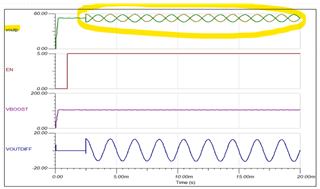Other Parts Discussed in Thread: DRV2665
Dear Technical Support Team,
According to the revision E,• Changed VDD MIN spec from 3.0 to 3.3.
What kind of effect will it have on the operation if it is used from 3V to 3.3V?
My supply voltage for VDD is 3.3V within recommendation.
But it's no margin about noise.
Best Regards,
ttd


